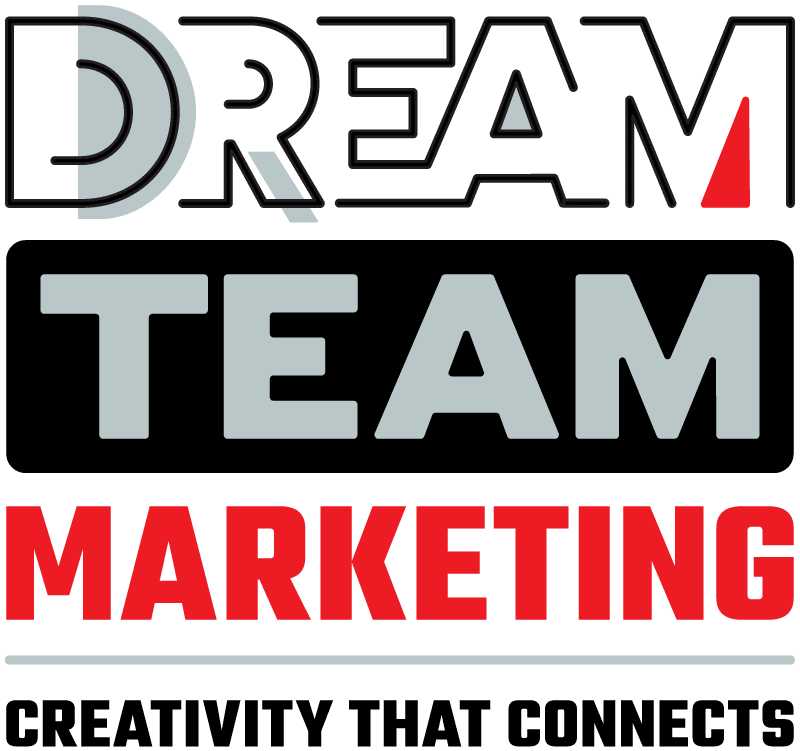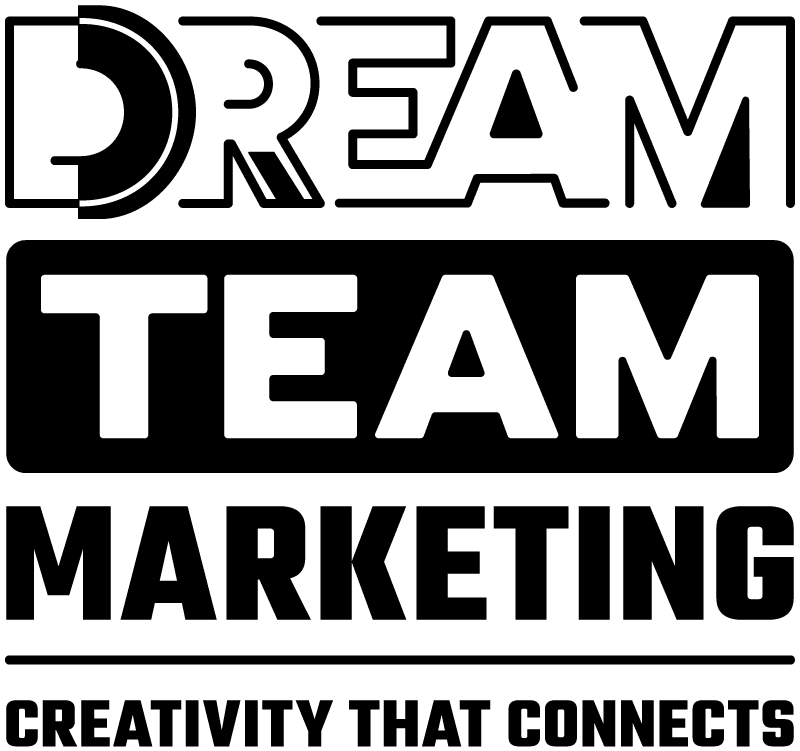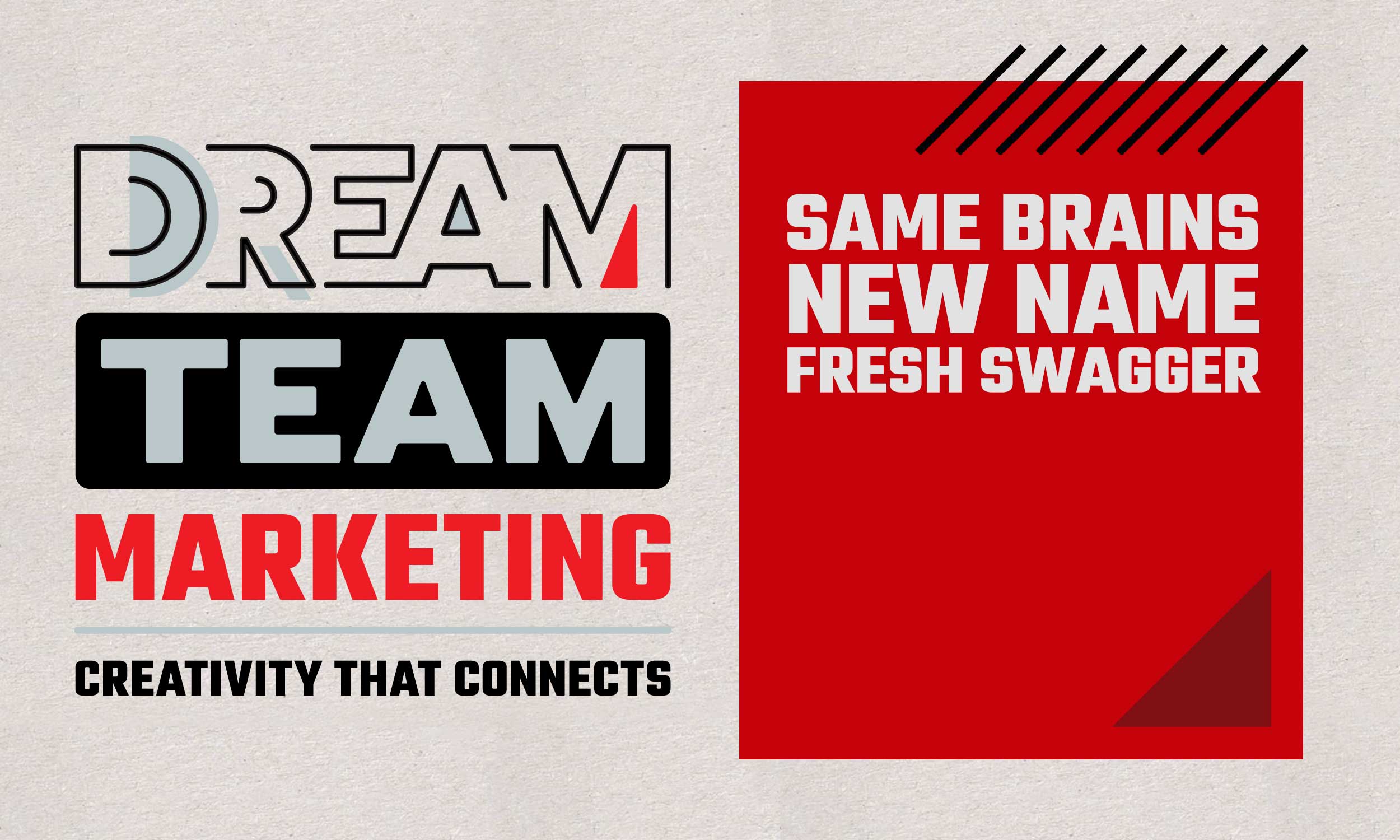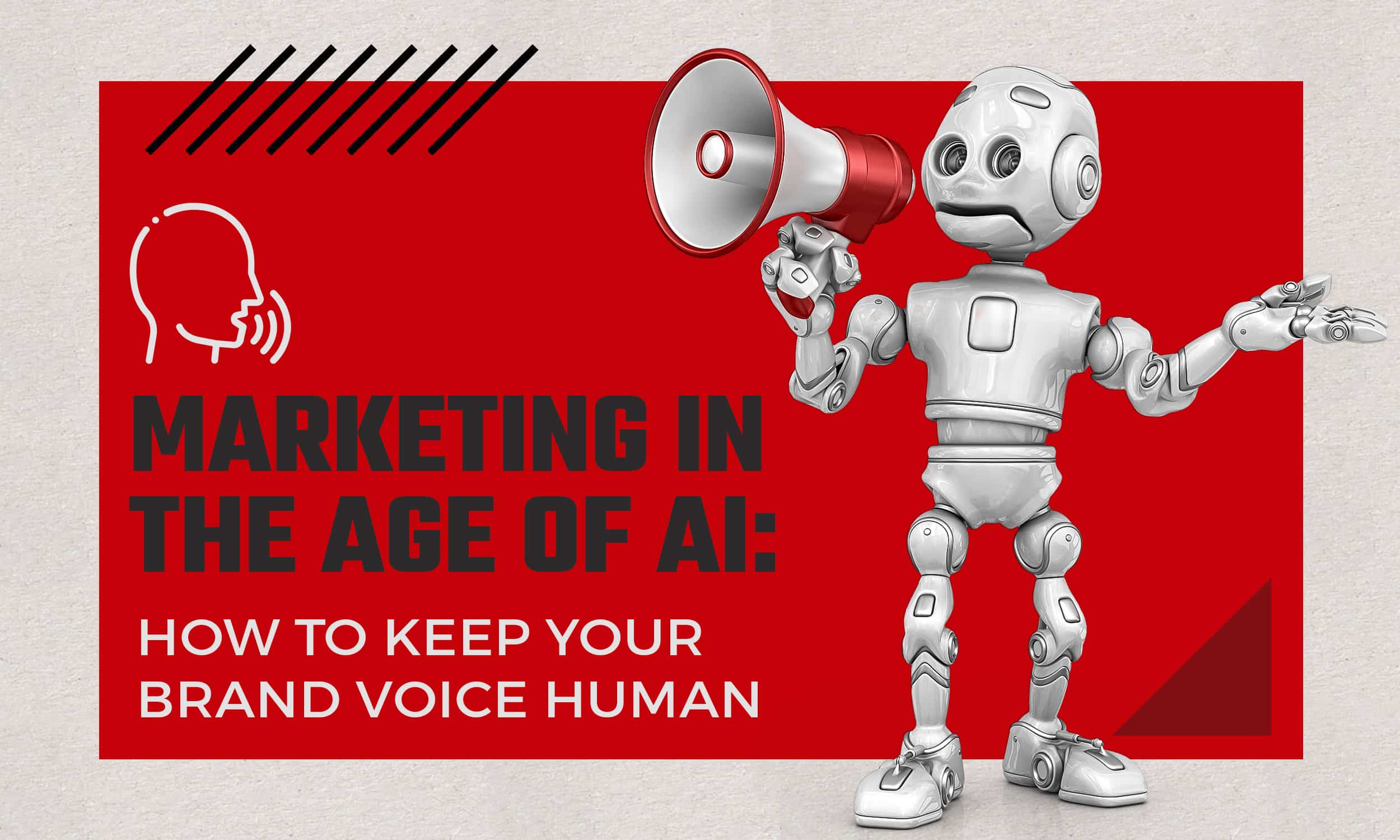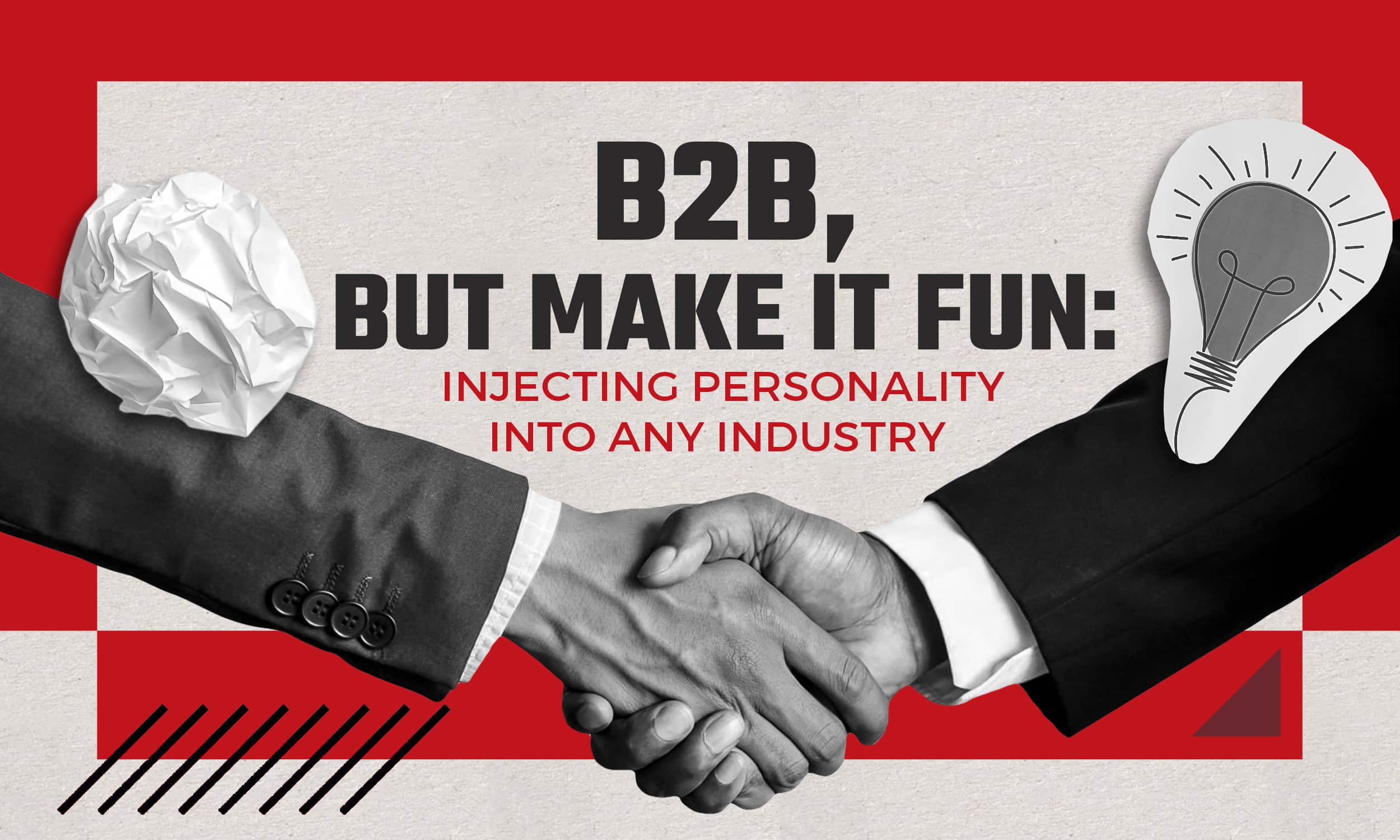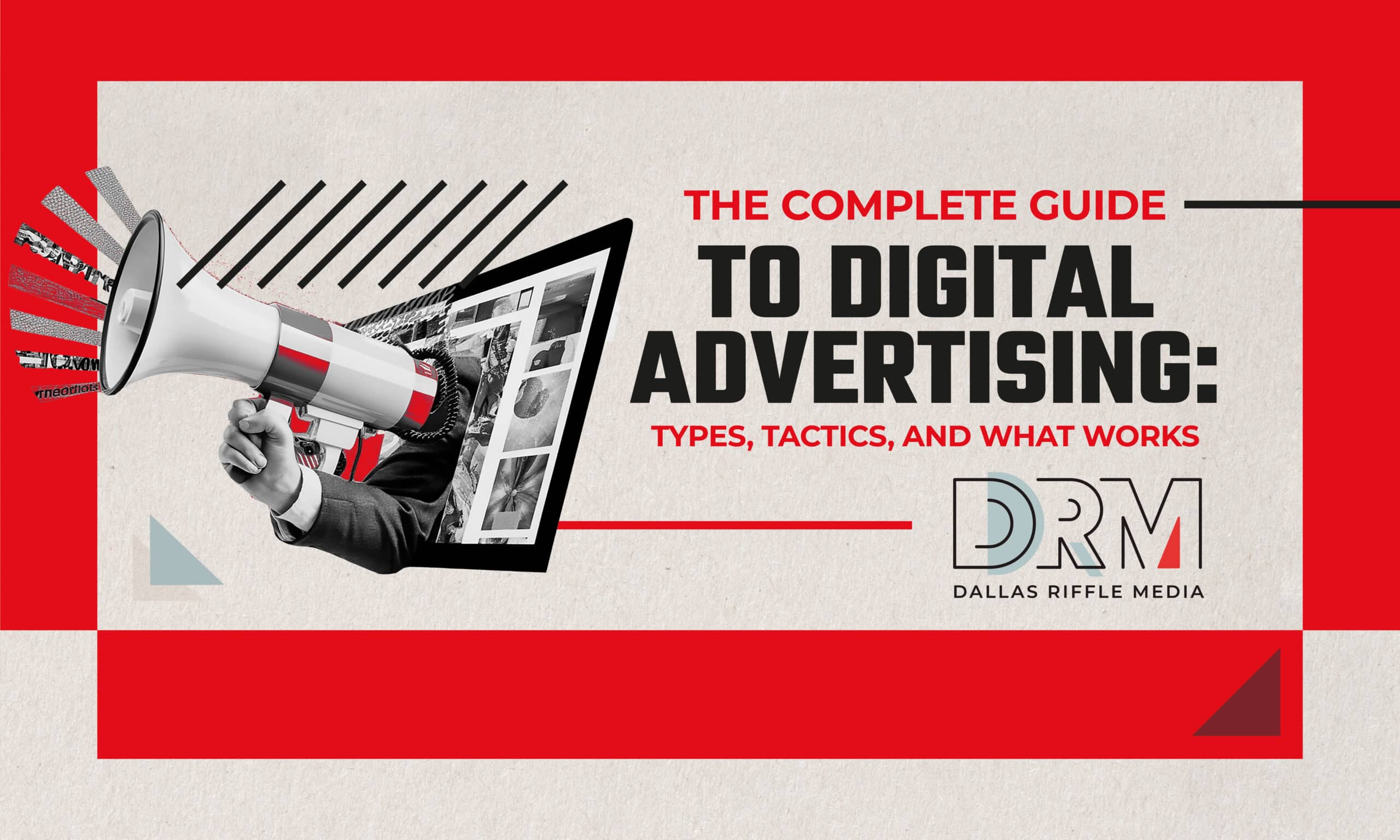
The Complete Guide to Digital Advertising: Types, Tactics, and What Works
Digital advertising is no longer a marketing option—it’s an essential. Whether you’re running a manufacturing company, professional firm, or a local coffee shop, digital advertising helps you get in front of the right people at the right time.
But if you’re throwing money at digital ads without a strategy, you might as well be tossing money out a moving car window. Digital advertising is powerful, but only when it’s used with intention. And that starts with understanding your options.
We’ll break down the different types of digital advertising, their main goals, strategic advantages, what works, and what doesn’t.
One caveat, however. This list isn’t exhaustive because that would be…well, exhausting. Besides, with the rapid growth in digital ad platforms, there will probably be 4 or 5 new ones by the time you’re done reading this! Instead, we cover the main digital ad types and how you should use them.
Goal: Capturing high-intent traffic
Search ads appear at the top of Google or Bing results when someone searches for a relevant keyword. You’re essentially paying to show up at the front of the line.
The most common model is Pay-Per-Click (PPC), where you’re only charged when someone clicks on your ad. Google Ads is the 800-pound gorilla, and its main advantage is that it targets users who are already searching for what you offer.
Why It Works: Well-written ads paired with the right landing page can turn clicks into conversions.
Why It Doesn’t: It gets expensive. Highly competitive keywords can drive your cost-per-click (CPC) sky-high. Without a well-optimized landing page and tight targeting, you’ll blow through your budget fast.
Goal: Building brand awareness
These are the banner, sidebar, and interstitial ads you see across websites. They’re visual, often image or video-based, but they rarely convert on first touch, so they’re best for brand building, especially with retargeting ads.
Display ads are commonly run through the Google Display Network or programmatic platforms, where your ads are shown across thousands of sites.
Why It Works: Striking visuals with short messages, used in combination with other ad types, keep your brand in front of potential buyers.
Why It Doesn’t: Display ads are notorious for low click-through rates. Many users ignore them, and ad blockers can prevent them from showing up entirely.
Goal: Engage, convert, and build community
You can reach users based on demographics, interests, behaviors, and more. You can also retarget users who’ve visited your website or engaged with your content.
Facebook, Instagram, LinkedIn, TikTok, Twitter/X—every platform has its own ad platform and custom creative per platform is non-negotiable; one-size-fits-all doesn’t work here.
Why It Works: Tailor your ads to the ‘feel’ of the platform. A polished Instagram story might flop on TikTok, and vice versa.
Why It Doesn’t: Performance depends heavily on creative. Poorly designed or irrelevant ads will fail quickly. Also, algorithms change often—what works today might flop next month.
Goal: Tell your story, drive deeper engagement
Video ads are everywhere—from YouTube pre-roll ads to short clips on Instagram and TikTok. People love video, and platforms love serving it up.
You can run video ads on YouTube through Google Ads, or directly within social platforms.
Why It Works: People are visual so hook viewers in the first 3 seconds. Optimize for mobile and don’t forget the captions—many people watch with the sound off.
Why It Doesn’t: People skip ads. If the first 3 seconds are meh, you’ve lost them. Video also requires more resources to produce well.
Goal: Educate and convert without disrupting
Native ads match the look and feel of the platform they appear on. Think of sponsored articles on news sites or promoted posts that look like regular content in a feed. Native ads are perfect for thought leadership, sponsored editorials, or subtle product promotion.
These ads don’t interrupt—they blend in. That makes them less intrusive and more engaging.
Why It Works: Focus on storytelling and value because a great native ad doesn’t feel like an ad.
Why It Doesn’t: If done poorly, it feels deceptive. Audiences may feel tricked into reading an ad disguised as content, which damages trust.
Goal: Leverage trust and authenticity
Influencer marketing blurs the line between paid ads and word-of-mouth. By partnering with creators who align with your brand, you can reach niche audiences in a credible way.
It works well on Instagram, TikTok, and YouTube, but also on blogs and podcasts. Engaging influencers isn’t a short-term tactic; it takes time to find, engage, and cultivate influencers.
Why It Works: Influencers whose values match your brand can create instant credibility. Micro-influencers (those with 10K–100K followers) often have the most loyal audiences and better engagement.
Why It Doesn’t: Not all influencers can deliver real engagement. Fake followers, poor alignment with your brand, or lackluster content can waste your budget.
Goal: Converting warm leads
Ever browsed a product and then seen ads for it everywhere? That’s retargeting.
Using cookies or pixels, you can serve ads to people who’ve already interacted with your brand but didn’t convert. It’s a great way to stay top-of-mind and bring people back.
Why It Works: You stay in front of people that were interested in your product or service. But change up your messaging; a reminder ad should feel different from the original.
Why It Doesn’t: Overdoing it can feel creepy. If your ads chase people around the internet too aggressively, they may block or ignore them.
Goal: Automated, data-driven campaigns
Programmatic uses AI and machine learning to buy and place ads in real time across digital channels. It automates the media buying process and uses data to serve ads to the right people at the right time.
It’s often used for display, video, and native ads, and it’s incredibly efficient at scale.
Why It Works: Working with an experienced partner can avoid wasted spend.
Why It Doesn’t: It’s complex. Without the right tech stack or experience, your ads could end up on irrelevant or low-quality sites.
Putting It All Together
Each type of digital advertising has its strengths. The real magic happens when they work together as part of an overall strategy.
- Use search ads to capture ready-to-buy customers.
- Layer in social and video ads for storytelling and retargeting.
- Add display and native for top-of-funnel awareness.
- Consider influencer or programmatic campaigns to scale.
Bottom Line (Because doing digital ads correctly contributes to YOUR bottom line)
Digital advertising isn’t about being everywhere. It’s about being in the right place at the right time in front of the right audience.
Can you manage digital advertising by yourself? Sure, you can. You can also buy lumber and bricks and build a new home, but sometimes letting a professional do it is the best option because they can build it much faster, more efficiently, and, quite frankly – better than you can because of their past experience and access to better tools.
Ready to use digital ads to grow your business and brand? The DRM creative collaborators can help you create a digital advertising strategy that ties your entire marketing strategy together.
DRM is a full-service marketing agency that uses creativity to connect your brand to your audience and help your business grow. We were founded to do what we are passionate about: Putting creativity to work and connecting brands to their audience, connecting audiences to your company goals, and connecting your business to the success it deserves.
